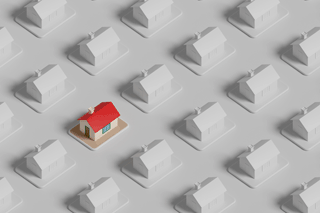Quote of the Week
“Anyone buying at the moment is doing so with a full expectation of these rate rises and we’re still seeing really healthy levels of listings and transactions.”
Owen Wilson, chief executive of REA Group
Buyers UnFazed By Rate Rises
 Most buyers aren’t deterred by the recent interest rate rise, with many having factored that into their calculations, according to Owen Wilson, chief executive of REA Group which publishes realestate.com.au.
Most buyers aren’t deterred by the recent interest rate rise, with many having factored that into their calculations, according to Owen Wilson, chief executive of REA Group which publishes realestate.com.au.
Wilson says the rate rise was off a very low base and even if more predicted rises occur it will only put the market back to where it was before the pandemic.
“The market has already factored it in, anyone buying at the moment is doing so with a full expectation of these rate rises and we’re still seeing really healthy levels of listings and transactions,” he says.
Wilson says banks have been using 5% as their serviceability interest rate, so anyone who has taken out a loan in recent years has been assessed at having the capacity to meet repayments at a much higher rate.
He believes demand may slow over the year but says that, in light of recent strong activity, this is a healthy outcome.
Most Borrowers Ahead On Repayments
 Bank economists say homeowners shouldn’t fear rate rises, as many can comfortably absorb increases.
Bank economists say homeowners shouldn’t fear rate rises, as many can comfortably absorb increases.
ANZ chief executive Shayne Elliott says the cash rate could be 2% by the end of the year, which, although higher than the recent low of 0.1%, is still low by historic standards.
ANZ has $285 billion worth of home loans on its books and Elliot says over 70% of its customers are well ahead on their repayments.
He says when rates went down most customers didn’t reduce the amount they were repaying, so they have built up a buffer.
That means that once the bank lifts its interest rates in response to the RBA move, 70% of its customers won’t have to find more money as they are already paying above what is needed to service the mortgage.
Elliott says many of their customers are now two years or more ahead on their repayments and only 0.7% are behind on their repayments.
Regions Make Big Population Gains
 Almost 50,000 people chose to move away from capital cities and into regional Australia last year.
Almost 50,000 people chose to move away from capital cities and into regional Australia last year.
Analysis of population data and real estate transactions by Propertyology shows that, in the year to June 2021, 48,202 people moved to regional locations with many heading to Queensland.
The population on the Sunshine Coast increased by 9%, while Hervey Bay increased by 6.5%, Gympie and the Gold Coast both 5.2%, the Scenic Rim 5.1% and Yeppoon 3.1%.
Propertyology founder Simon Pressley says Greater Brisbane and Greater Hobart have the highest population growth from internal migration with their populations up 2.8% and 1% respectively in the past five years.
“Their respective property markets produced capital growth rates of 29% and 80% over the five-year period,” he says.
Of those moving away from capital cities last year, the majority came from Sydney and Melbourne.
Victoria’s Surf Coast was also a popular destination with its population up by 12.5% and NSW’s Port Macquarie region up by 8.5%.
94% Of Sellers Make A Profit
 Regional property owners are (slightly) more likely than capital city owners to sell for more than they originally paid, according to the latest Pain and Gain report.
Regional property owners are (slightly) more likely than capital city owners to sell for more than they originally paid, according to the latest Pain and Gain report.
Regional Australia owners achieved a higher price on 94% of sales, compared with 93.7% for capital city owners.
Nationally 93.8% of resales were for a higher price, up from 92.4% in the previous quarter for a total nominal profit of $38 billion.
The report says the national median nominal gain was $319,000 with total resale profits of $38 billion over the December 2021 Quarter. For those who sold for less, the median loss was $34,000.
CoreLogic Head of Research Eliza Owen says houses are more likely to sell for a profit than units.
“Investors had a lower incidence of profitability (91.4%) than owner-occupier sellers (96.7%),” Owen says.
She says while investors and owner-occupiers tended to hold properties for the same period of time, it was the type of properties purchased by investors which resulted in smaller profits.
Data Reveals Shortage Of Dwellings
 Listings of properties for sale rose 4.8% increase during April, but they remain well below the levels of a year ago.
Listings of properties for sale rose 4.8% increase during April, but they remain well below the levels of a year ago.
SQM Research data puts national listings at 228,901 properties, up from 218,398 in March.
The largest increases in listings in April were in Hobart (17.7%), Brisbane (7.8%) and Sydney (5.8%).
Despite the month-on-month increase, numbers are still about 13% lower than at the same time last year.
SQM managing director Louis Christopher says April is generally a slower month for new listings as a result of multiple public holidays.
“There may also have been an element of caution by would-be new vendors given the perceived slowdown in some property markets,” according to Christopher.
He says absorption rates across the country are slowing.
In other news relating to the shortage of supply, housing approvals dropped 18.5% in February.
Approvals for standalone dwellings fell 3.1% and attached dwellings (apartments, townhouses and semi-detached homes) dropped 38%, according to the ABS.




